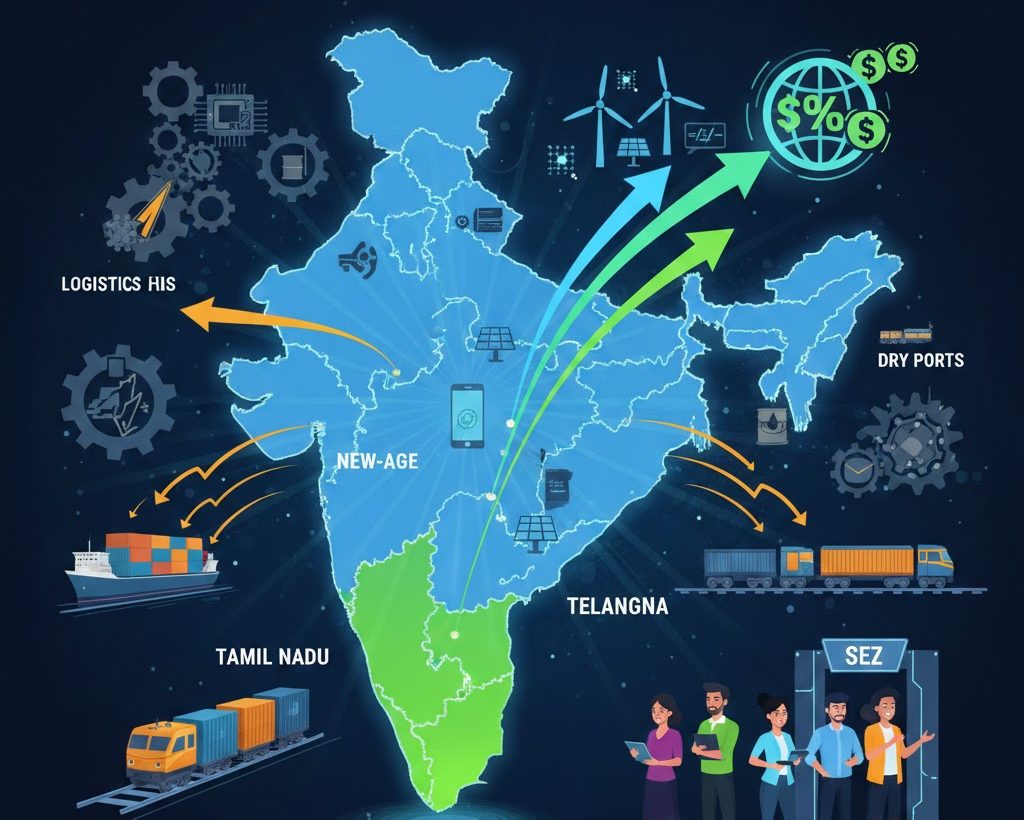Font size:
Print
India’s Urban Transformation
Context:
India stands on the brink of a significant urban transformation. Over the coming decades, the country is expected to house the largest urban population globally. However, the framework for India’s urban future is often shaped by policies devised far from the very streets and communities they impact.
India’s Urban Evolution
- The trajectory of urbanisation in India gained momentum post-1990s with the advent of liberalisation.
- Since then, successive Union governments have played a critical role in directing urbanisation through various schemes, from the Jawaharlal Nehru National Urban Renewal Mission (JNNURM) to more recent urban flagship initiatives.
- This highlights the Union Government’s decisive role in shaping India’s urban landscape.
Centre’s Role in Urban Development
- State Subject: Urban development, being a State subject, raises pertinent questions about the extent of the Centre’s involvement in shaping the urbanisation process.
- Centrally Driven Schemes: Over the years, numerous centrally driven housing schemes—such as Indira Awas Yojana, Rajiv Awas Yojana, and the Pradhan Mantri Awas Yojana (PMAY)—along with essential utility programs like the Basic Services for the Urban Poor (BSUP), the Atal Mission for Rejuvenation and Urban Transformation (AMRUT), and the Swachh Bharat Mission (SBM) have catalysed urbanisation in India.
- Mobility Sector: In the mobility sector, centrally sponsored urban initiatives have guided cities in developing their mobility plans.
- The NDA government placed significant emphasis on metro rail projects, allocating nearly 30% of the total Union budget to their development.
- However, these missions often follow a rigid, top-down approach, prioritising spatial planning, financial structuring, and administrative protocols over local needs, leaving States and cities with limited flexibility to adapt to their unique contexts.
Centralised Financial Approach
- Growth Engines: One of the primary reasons for the Centre’s prescriptive approach to urban financing lies in the perception of cities as economic growth engines.
- Successive Union governments have viewed urban centres as vital hubs for economic expansion.
- Infrastructure Development: Moreover, infrastructure development is considered a key driver of growth, essential for enhancing India’s competitiveness and achieving the $5 trillion economy goal.
- Consequently, financial transfers from the Centre, structured through centrally sponsored and Central sector schemes, have significantly influenced urban development patterns.
- Finance Commissions: Union finance commissions, while allocating funds, have introduced conditionalities that shape urban policies at the sub-national level.
- For instance, the 15th Finance Commission recommended that city governments enhance property tax collections in proportion to the State’s GDP growth.
- Additionally, instead of directly granting funds to city administrations to be used at their discretion, the Commission imposed specific conditions on these grants.
More Effective Alternative
- Centre as Guide: Since urban development falls under the jurisdiction of States, a more effective model would involve the Centre playing a guiding role rather than imposing directives.
- India’s urbanisation varies significantly across regions and States.
- Labour migration trends illustrate these differences, with northern States experiencing an exodus of workers to southern States, which have developed distinct demographic patterns.
- For instance, Kerala’s urbanisation follows a ‘rural-urban continuum,’ where city boundaries seamlessly blend into rural panchayats.
- Similarly, Gujarat’s urbanisation differs in that wealthier residents are shifting to peripheral areas as urban cores become overcrowded or polluted, mirroring trends seen in U.S. cities during the 1970s and 1980s.
- Inefficiency of Uniform Models: Such regional variations highlight the inefficacy of a uniform urban development model.
- Not all cities require extensive housing construction—some have ample social housing, rendering PMAY redundant.
- Similarly, while some cities need better water and sanitation facilities, others already possess adequate infrastructure.
- The one-size-fits-all approach of centrally designed missions like SBM fails to address such disparities.
- Decentralised Approach: A decentralised, scientifically devised devolution process would be more effective in ensuring that resources are allocated based on local needs.
Restructuring Financial Devolution
- Restructuring the Budget: Around 70% of the total budget should be directly transferred to States and, through State finance commissions, to city governments.
- The remaining 30% can be allocated for national priorities, such as climate-resilient infrastructure.
- However, the prevailing top-down approach often compels State governments to replicate the Centre’s budget framework instead of making innovative investments that cater to their unique needs.
- Direct Transfer: A direct transfer system should categorise funds into broad sectors such as mobility, sanitation, housing, water, and waste management.
- Cities should be empowered to prioritise their funding needs based on local requirements, with support from State governments and knowledge agencies.
- This would ensure more scientific and demand-driven utilisation of central grants rather than compliance with rigid national mission guidelines.
- Efficiency: Such a system would also prevent inefficiencies seen under the Smart Cities Mission, where funds either remained unutilised or were hastily spent on projects with no local demand simply to meet bureaucratic requirements.


